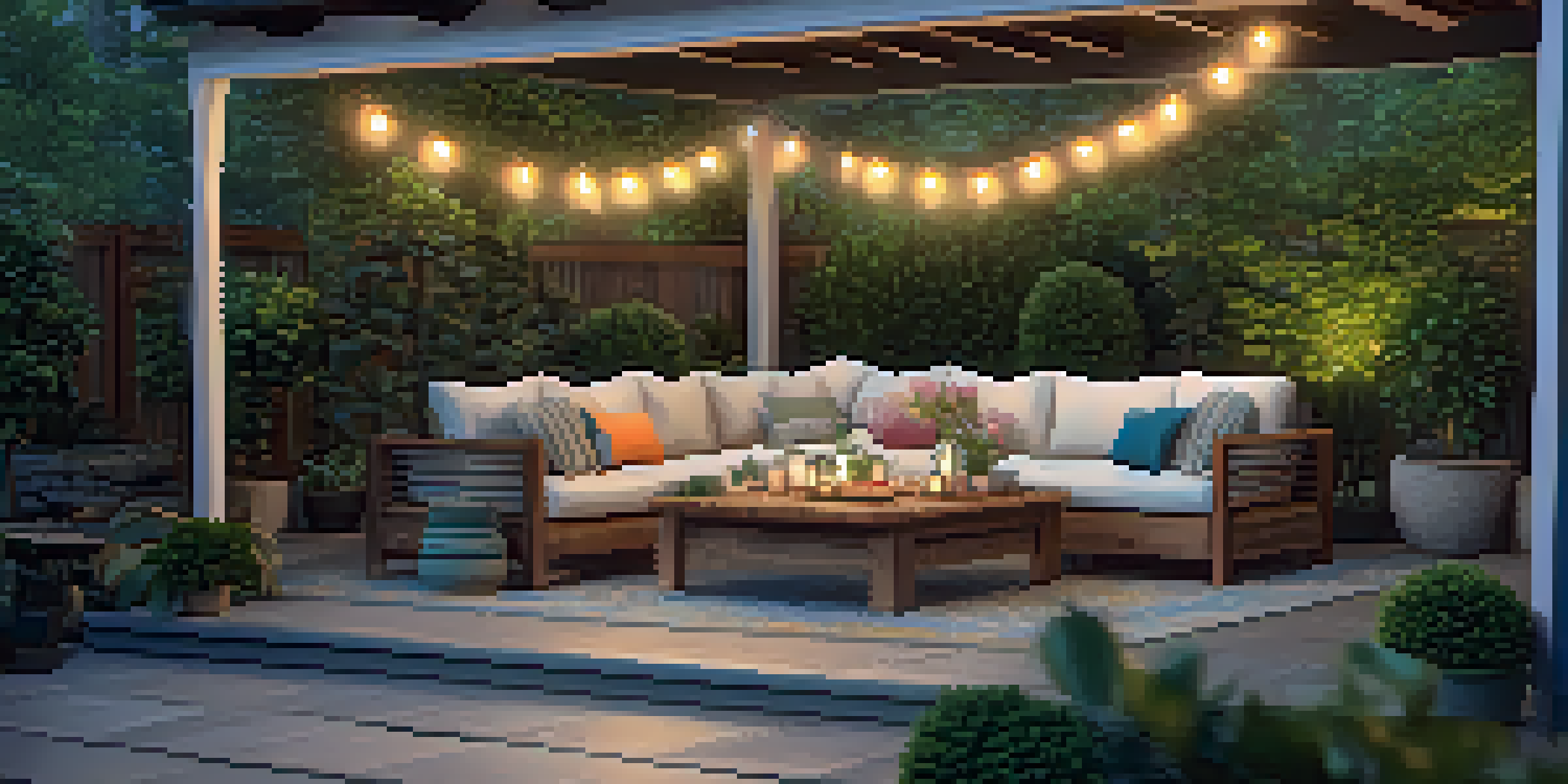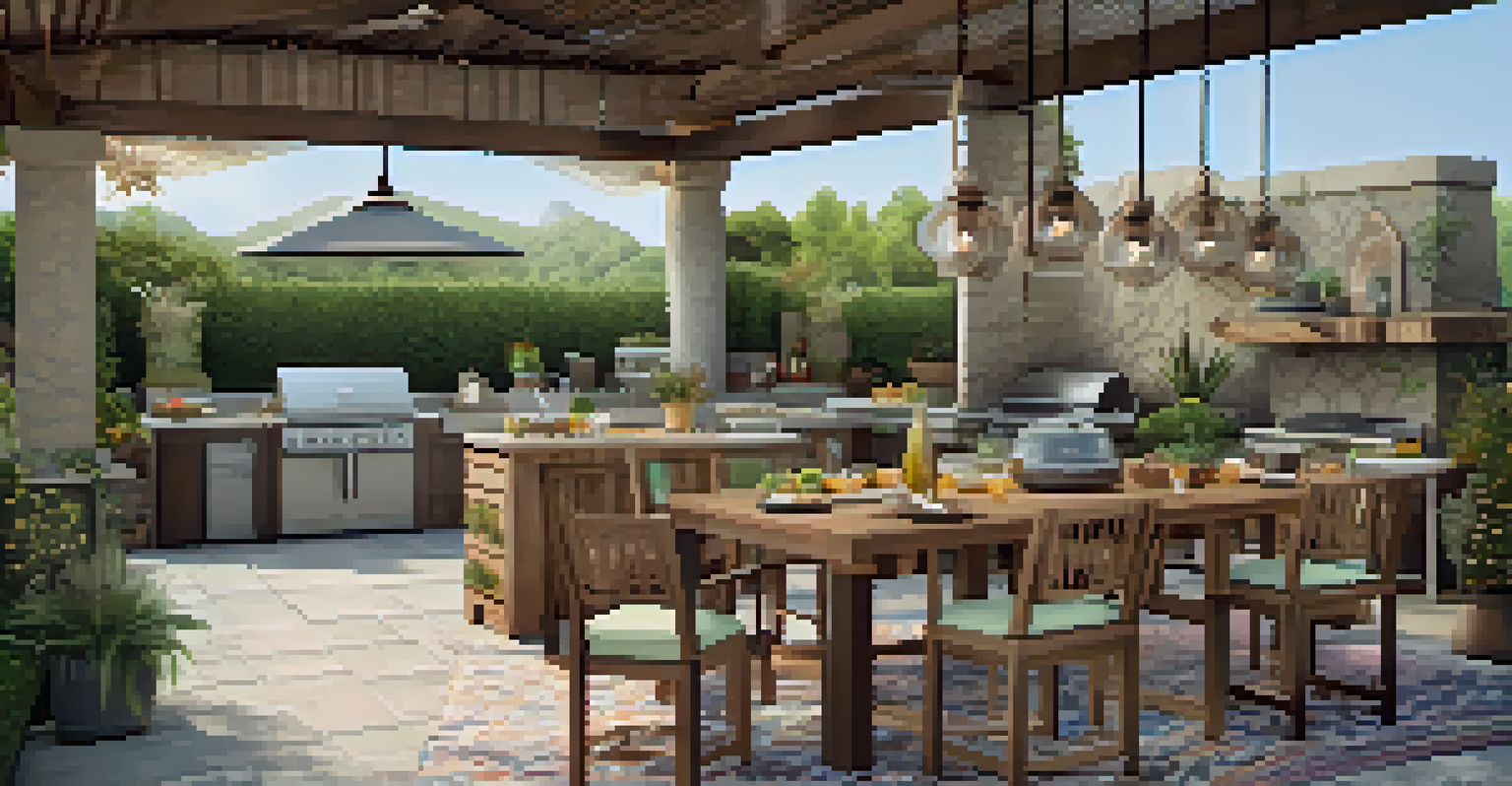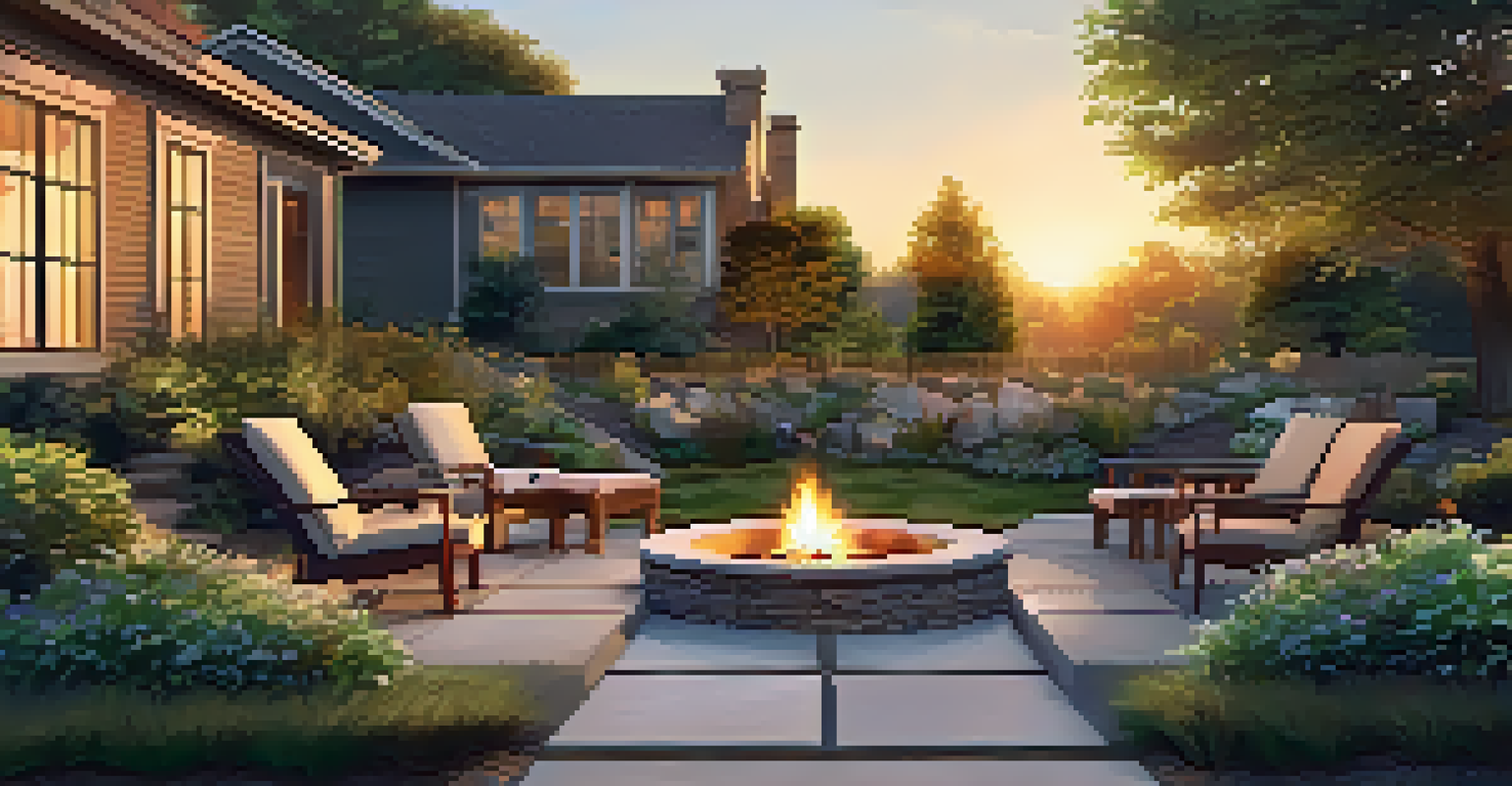Design Principles for Effective Outdoor Living Areas

Understanding the Importance of Outdoor Living Spaces
Outdoor living areas are more than just an extension of your home; they provide a place for relaxation, entertainment, and connection with nature. In today’s fast-paced world, having a space to unwind outdoors can significantly enhance your quality of life. These areas can serve as a sanctuary, offering a serene escape right in your backyard.
The outdoors is a place where you can feel the earth, hear the wind, and see the beauty of nature. It’s essential for our well-being.
Imagine sipping your morning coffee while basking in the gentle sunlight or hosting a delightful barbecue with friends under the stars. Such experiences highlight the value of thoughtfully designed outdoor spaces. They can improve your home's functionality and increase its overall appeal and market value.
By investing time and effort into creating an inviting outdoor area, you are not only enhancing your lifestyle but also contributing to the beauty of your neighborhood. Let’s dive into the essential design principles that can transform your outdoor living area into a haven of comfort and style.
Creating a Seamless Flow Between Indoors and Outdoors
One of the key principles of effective outdoor design is ensuring a seamless transition between indoor and outdoor spaces. This can be achieved by using similar materials, colors, and styles both inside and outside. For example, if your living room features warm wooden tones, consider incorporating similar wood elements in your patio furniture or deck.

Another way to enhance this flow is by utilizing large windows or sliding doors that open up to the outdoor area. This not only invites natural light into your home but also makes the outdoor space feel like a natural extension of your living area. Think about how you can make the outdoors more accessible and inviting.
Enhance Life with Outdoor Spaces
Creating outdoor living areas provides relaxation, entertainment, and a connection to nature, improving your overall quality of life.
By fostering this connection, you create a more cohesive and inviting environment that encourages you to spend more time outside. As you explore your design options, remember that the goal is to create harmony between your indoor and outdoor spaces.
Choosing the Right Furniture for Comfort and Style
Selecting the right furniture is crucial in designing an effective outdoor living area. Comfort should be a top priority, as you want your space to be inviting for both relaxation and social gatherings. Opt for outdoor furniture made from durable materials that can withstand the elements while providing comfort, such as cushioned lounges or cozy hammocks.
Nature is not a place to visit. It is home.
Incorporating a variety of seating options can enhance the versatility of your space, catering to different occasions. For instance, a combination of dining tables, lounge chairs, and even a fire pit can create an inviting atmosphere for both intimate dinners and lively get-togethers. Remember, the more comfortable your guests feel, the longer they will want to stay.
Additionally, consider the aesthetic appeal of your furniture. Choose colors and designs that reflect your personal style and complement your outdoor environment. Investing in quality furniture not only improves the look of your space but also ensures longevity and durability.
Incorporating Natural Elements for a Balanced Look
Integrating natural elements into your outdoor living area can create a harmonious and balanced environment. Think about incorporating plants, trees, or even a small garden to add vibrancy and life to your space. Not only do these elements provide visual interest, but they also improve air quality and create a calming atmosphere.
Consider using native plants that thrive in your local climate, as they require less maintenance and water. Additionally, the use of natural materials like stone, wood, or bamboo can enhance the organic feel of your outdoor area. For example, a stone pathway leading to a seating area can add character and guide guests through your space.
Seamless Indoor-Outdoor Flow
Achieving a harmonious transition between indoor and outdoor spaces enhances accessibility and encourages more time spent outside.
Ultimately, incorporating natural elements helps to create a serene backdrop that encourages relaxation and connection with nature. As you design your outdoor area, think about how these elements can enhance your overall vision.
Lighting: Setting the Mood for Outdoor Spaces
Effective lighting can transform your outdoor living area into an enchanting space, perfect for evening gatherings or quiet nights under the stars. Consider a mix of ambient, task, and accent lighting to create a warm and inviting atmosphere. String lights, lanterns, and solar-powered garden lights can add charm and functionality.
Positioning lights strategically can highlight focal points in your outdoor area, such as trees, water features, or architectural elements. For instance, placing lights along pathways can enhance safety while contributing to the overall aesthetic. Think about how you want your space to feel during different times of day.
By carefully selecting and positioning outdoor lighting, you create an inviting ambiance that encourages you to enjoy your outdoor space long after the sun goes down. Remember that thoughtful lighting can enhance both the beauty and functionality of your outdoor living area.
Adding Functional Features for Year-Round Enjoyment
To maximize the usability of your outdoor living area, consider incorporating functional features that allow for year-round enjoyment. Features like fire pits, outdoor kitchens, and covered patios can transform your space into a year-round retreat. Imagine roasting marshmallows by the fire on a chilly night or cooking a delicious meal outdoors during the summer.
Incorporating heating elements, such as patio heaters or outdoor fireplaces, can extend the usability of your space well into the cooler months. Similarly, installing a shade structure or canopy can make your outdoor area more comfortable during hot summer days. Think about how you can create an environment that adapts to changing seasons.
Functional Features for All Seasons
Incorporating elements like fire pits and shade structures allows for year-round enjoyment of your outdoor living area.
By adding these functional features, you not only increase the enjoyment of your outdoor space but also enhance its value. A well-designed outdoor living area can become a favorite gathering spot for family and friends, regardless of the season.
Personalizing Your Outdoor Space with Accessories
Accessories are the finishing touches that can truly personalize your outdoor living area. From decorative cushions and outdoor rugs to unique planters and artwork, these elements can reflect your style and create a welcoming atmosphere. Choose accessories that complement your furniture and overall design theme, adding character to your space.
Consider incorporating elements that resonate with your personality, such as colorful throw pillows or elegant lanterns. These accessories can enhance comfort while allowing you to showcase your creativity. Additionally, using local or handmade items can support artisans and add a unique touch to your outdoor area.

Personalizing your outdoor space with accessories not only makes it more visually appealing but also creates a sense of belonging. Your outdoor area should feel like an extension of your home, reflecting your tastes and preferences.
Maintaining Your Outdoor Living Area for Longevity
Regular maintenance is essential to keep your outdoor living area looking its best. This includes tasks such as cleaning furniture, trimming plants, and checking for wear and tear on features like decks and patios. By dedicating a little time each season to maintenance, you can ensure that your outdoor space remains inviting and functional.
Consider creating a maintenance schedule that outlines specific tasks for each season. For example, cleaning and covering furniture in the winter can help extend its lifespan, while refreshing garden beds in the spring can keep your plants healthy and vibrant. Consistent care can prevent small issues from becoming larger problems.
Ultimately, maintaining your outdoor living area can significantly enhance its longevity and beauty. A well-kept space invites you and your guests to enjoy it year after year, making it a cherished part of your home.